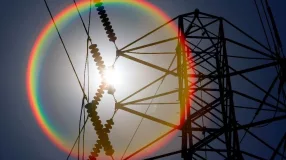United States’ natural gas production has skyrocketed over the last 14 years, increasing by 91 percent and transforming the nation from an energy importer to energy exporter. Notwithstanding this energy abundance, communities across New York and New England are suffering from an artificial shortage of natural gas due, in large part, to the actions of elected official and regulators in the State of New York.
A recent study by the Manhattan Institute, “Out of Gas: New York’s Blocked Pipelines Will Hurt Northeast Consumers,” looked at the growing shortage in New York and New England and explained how both consumers and the environment are harmed by efforts to restrict access to natural gas.
It’s no secret that the State of New York has chosen to deprive its citizens of the benefits of the portion of the Marcellus Shale – one of the largest and most prolific basins in the country – that lies within the state’s borders. Hydraulic fracturing has been banned in the state since 2008. By 2018, New York produced so little natural gas that the Energy Information Administration (EIA) no longer published numbers for the state’s production. New York, the sixth-largest natural gas consumer among the 50 states, now depends almost entirely on natural gas from other states to meet its needs.
And because transporting natural gas through New York is the only practical path for delivering domestic gas to New England, consumers in both New York and New England have suffered the consequences of the state’s antipathy to the construction of new natural gas infrastructure and the extension of existing pipelines.
In January of this year, natural gas distribution companies Con Ed and Holyoke Gas & Electric announced they were suspending new natural gas connections in Westchester County, N.Y., and Holyoke, Mass., respectively. A few weeks later, Middleborough Gas and Electric, also in the Bay State, announced a similar moratorium. By February, 1.1 million residents in 43 New York and Massachusetts communities were affected by the moratoriums.
As Holyoke Gas & Electric explained in a January customer notice:
“While inexpensive natural gas has never been more plentiful in the United States, there is insufficient pipeline capacity in our region to deliver additional load. Recent proposals that would increase natural gas capacity in the region have been met with opposition, and the current constraints are causing significant adverse environmental and economic impacts on the region’s ratepayers.”
Restricting access to natural gas only makes things worse for New Yorkers, whose already pay some of the highest utility rates in the country – a whopping 90 percent above the national average.
Most ironically, constraints put on natural gas supplies have caused higher levels of pollution and carbon dioxide emissions. Oil-fired generators often fill the gap when natural gas is unavailable. Furthermore, the variability of renewable generators such as wind and solar creates an additional gap to be filled with less benign fuels when natural gas cannot be used to firm up these resources.
As the Manhattan Institute explains, access to natural gas — and the infrastructure to deliver that gas — can be a solution for these economic and environmental burdens. Unfortunately, due to the decisions of state officials to thwart the construction of new pipelines, families and businesses in the Northeast continue to suffer. Hopefully, the states will reconsider these choices. In addition, it is important to reinforce federal authority that can place reasonable limits on states’ ability to delay or block critical energy infrastructure projects. Current initiatives to clarify the balance of authority under Section 401 of the Clean Water Act are a step in this direction.






